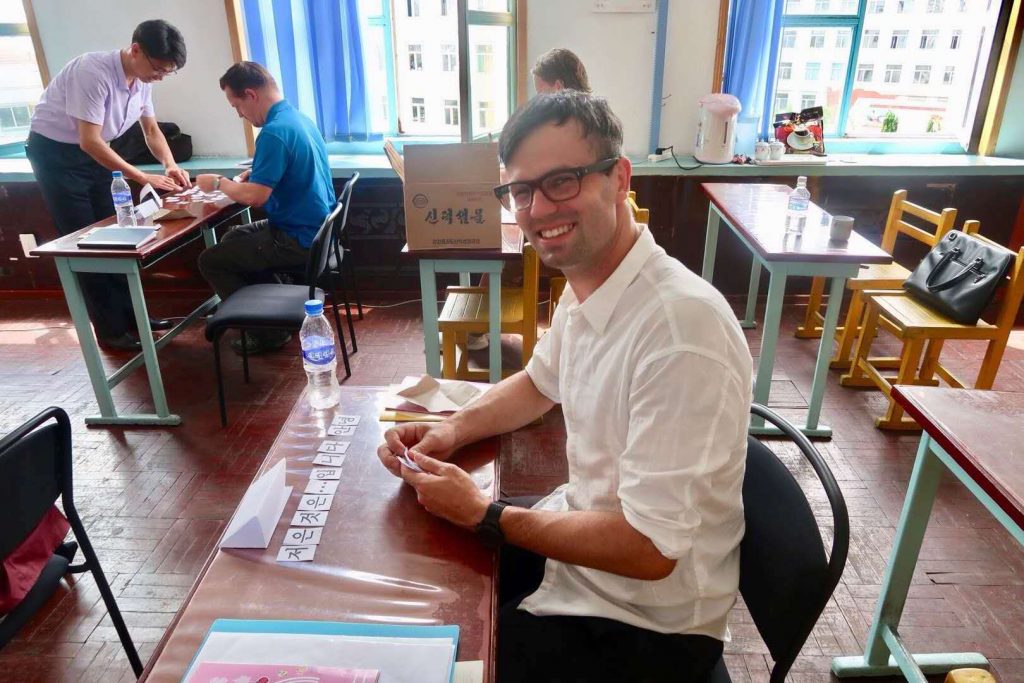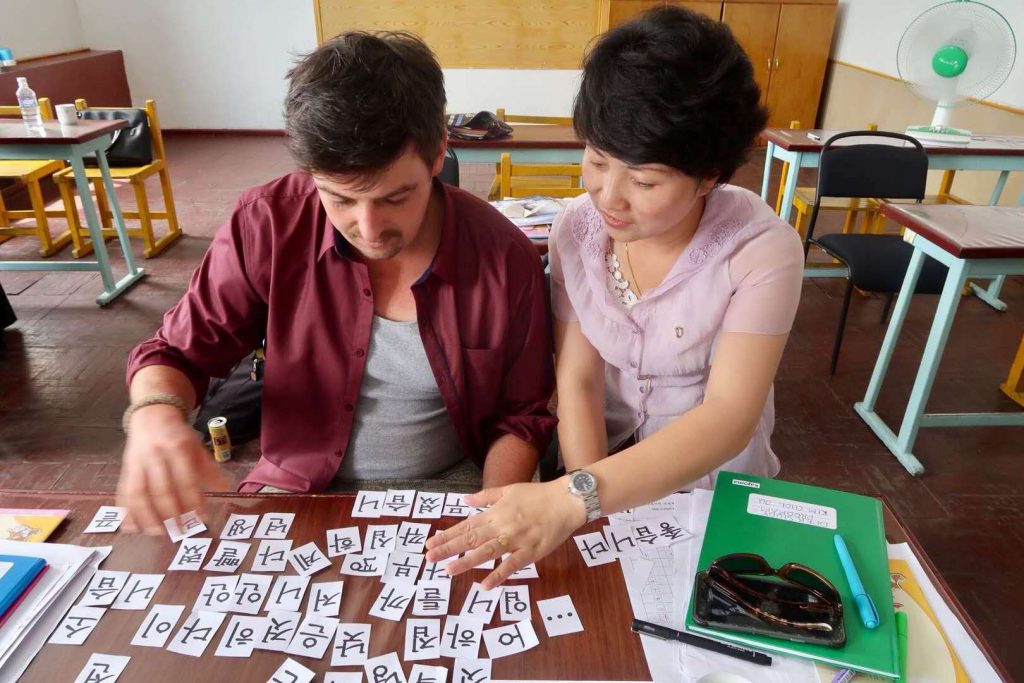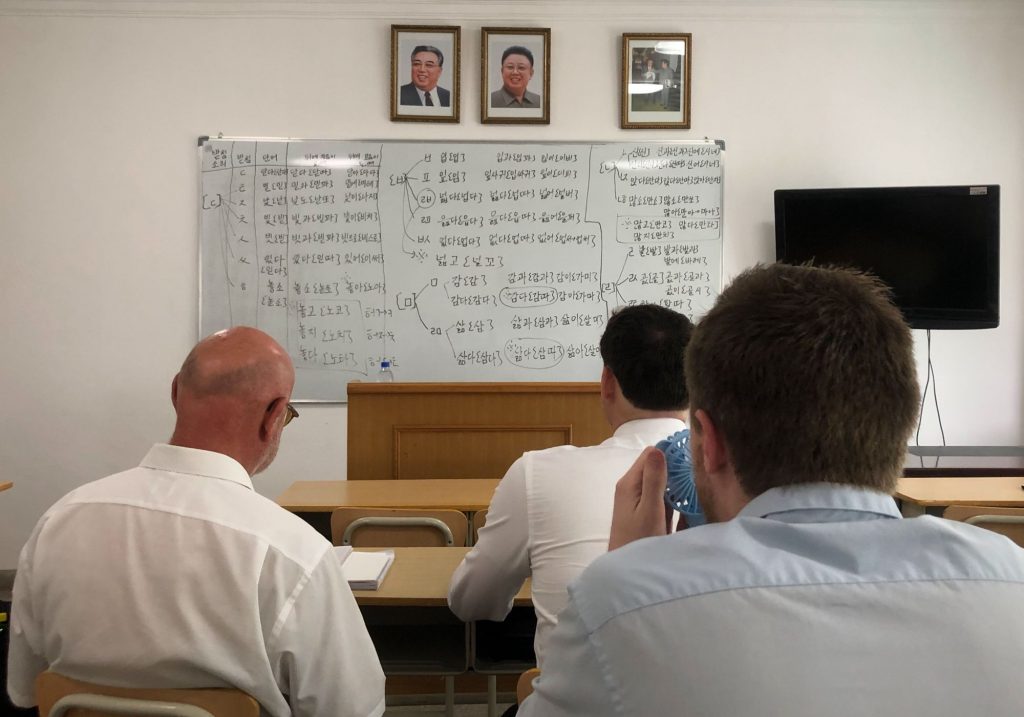North Korean and South Korean are the same language simply known as Korean. However, within the Korean language, there are some differences. A South and North Korean will generally have no problem understanding each other, but there may be some noticeable differences in the language or style of language used.
Whilst largely similar, the North Korean dialect used in North Korea tends to be more formal, and typically doesn’t include many English language loanwords used in the South Korean dialect.
How do you say hi in Korean? How do you say hello in Korean?
For example hello in Korean is An·nyong·ha·sim·ni·kka (안녕하십니까) in North Korea. How to say hello in Korean is An·nyong·ha·se·yo (안녕하세요) in South Korea. Hi in Korean is An·nyong (안녕) and is used by both North and South Koreans.
A common phrase you’ll hear on your visit to North Korea which is equivalent of Korean hello is pan·gab·sum·ni·da (반갑습니다) which means nice to meet you.
Allow this Korean language guide to teach you some incredibly helpful words you may use on your trip to North Korea. The Koreans don’t expect foreigners to know any local North Korean dialect so use this for your advantage to impress them.
The language has great depth, and if you’re interested in learning North Korean, sign up for our Pyongyang study tour held every year. We are the only travel company to offer this program.
Korean Addressing Keywords
The Korean language regards politeness highly, and this can be shown in what type of language you use when addressing different people. In basic terms, there are 7 different styles of speech that range from friendly to super polite. These levels are high, middle, and low.
The basic form of the language is how you will speak to your friends and those the same age or younger than you (hae-che). The next level up (haoeyo-che) is how you will address those older than you, meeting new people, or generally when you want to be polite. This is used most often, and is the style of speech you’re most likely to learn when beginning learning Korean. The next level up is the super polite version (hasipseo-che) and how, in South Korea, you would speak to very high up people, in business speech, or in customer service.
In North Korean, however, this super polite level is used much more often, similar to the middle polite level. You should use hasipseo-che when talking to anyone older than you/strangers. In North Korea there are two unique ways you’ll never find in South Korea of addressing others.
Dong·ji (동지) which means Comrade. This is used when addressing anyone who is superior or older than you. This can also be added after the person’s name. Eg: Hello Rowan Dongji!
Dong·mu (동무) which also means Comrade. However, this is used when addressing anyone of a lower rank than you or who is younger than you. This can also be added after the person’s name.
You can see these two terms above commonly used in the South Korean TV drama series Crash Landing on You. However, below are ways used to address others that is used in both South and North Korea.
Hyong·nim (형님) means older brother and is used when a male addresses a senior male.
Oppa (오빠) means older brother and is used when a female addresses a senior male. This can also be used for a girlfriend to address her boyfriend.
Nuna (누나) means older sister and is used when a male addresses a senior female.
Onni (언니) – means older sister and is used when a female addresses a senior female.
North Korean Keywords
Thank you (감사합니다) – Kam·sa·hab·ni·da
Sorry (미안합니다) – Mi·an·ham·ni·da
Beautiful / Nice (아름답습니다) – Ah·rum·dap·sum·ni·da
Let’s go! (갑시다 ) – Kab·shi·da!
Hurry up! (빨리 빨리) – Balli·balli
Waiter / Waitress (접대원 동무) – Jop·tae·won·dong·mu
Shop assistant or service staff (봉사원 동무) – Bong·sa·won·dong·mu
Mineral water bottle (산물) – San·mul
Cheers / To your health! (축배) – Chuk·bae
See you again (다시 만납시다) – Da·si·man·nap·si·da
Writing Style
Both North and South use the Hangul (한글) writing system, however in North Korea they refer to it as Joseon-geul (조선글)
English loanwords
Apart from the formality, English loanwords is the other biggest difference between North and South Korean languages. North Korea has been isolated for over 70 years and their loanwords tend to come from Russia or China. South Korea is an open economy with western products, concepts, technology and culture flooding the market which is why the Southern dialect has over 24,000 English loanwords.
During 2004, North and South Korea agreed to use language scholars from both countries to compile a grand dictionary of the national language. The project aim was to restore unity to the language with over 330,000 words. Since then the project has been halted as relationships between the two countries have recently worsened. Almost 17 years later the project is 76% complete.
Academics were able to discover there is a 38% difference in everyday vocabulary and 66% difference in specialist terms used in North and South Korea. Some examples include:
Ice cream – SK: ai·seu·keu·lim (아이스크림), NK: Ol·um·gwa·ja (얼음과자) literally means ice snack
Juice – SK: ju·seu (주스), NK: Dan·mul (단물) (sweet water)
Shampoo – SK: syam·pu (샴푸), NK: Meo·ri·mul·bi·nu (머리물비누) (hair water soap)
Korean sign language
Even the sign language used in both Koreas are quite different. The video below demonstrates the difference of addressing family members using both sign languages. For more videos on Sonmal Sueo (손말수어) feel free to check out their channel and subscribe. Their unique program is sponsored by us here at YPT.













